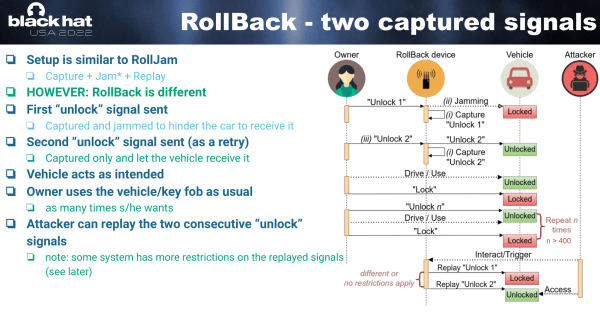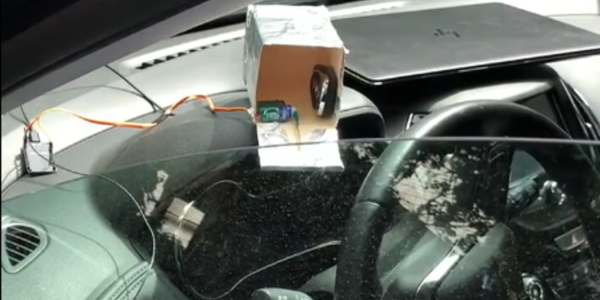Honda cars have been found to be severely vulnerable to a newly published Rolling PWN attack, letting you remotely open the car doors or even start the engine. So far it’s only been proven on Hondas, but ten out of ten models that [kevin2600] tested were vulnerable, leading him to conclude that all Honda vehicles on the market can probably be opened in this way. We simply don’t know yet if it affects other vendors, but in principle it could. This vulnerability has been assigned the CVE-2021-46145.
[kevin2600] goes in depth on the implications of the attack but doesn’t publish many details. [Wesley Li], who discovered the same flaw independently, goes into more technical detail. The hack appears to replay a series of previously valid codes that resets the internal PRNG counter to an older state, allowing the attacker to reuse the known prior keys. Thus, it requires some eavesdropping on previous keyfob-car communication, but this should be easy to set up with a cheap SDR and an SBC of your choice.
If you have one of the models affected, that’s bad news, because Honda probably won’t respond anyway. The researcher contacted Honda customer support weeks ago, and hasn’t received a reply yet. Why customer support? Because Honda doesn’t have a security department to submit such an issue to. And even if they did, just a few months ago, Honda has said they will not be doing any kind of mitigation for “car unlock” vulnerabilities.
As it stands, all these Honda cars affected might just be out there for the taking. This is not the first time Honda is found botching a rolling code implementation – in fact, it’s the second time this year. Perhaps, this string of vulnerabilities is just karma for Honda striking down all those replacement part 3D models, but one thing is for sure – they had better create a proper department for handling security issues.
















